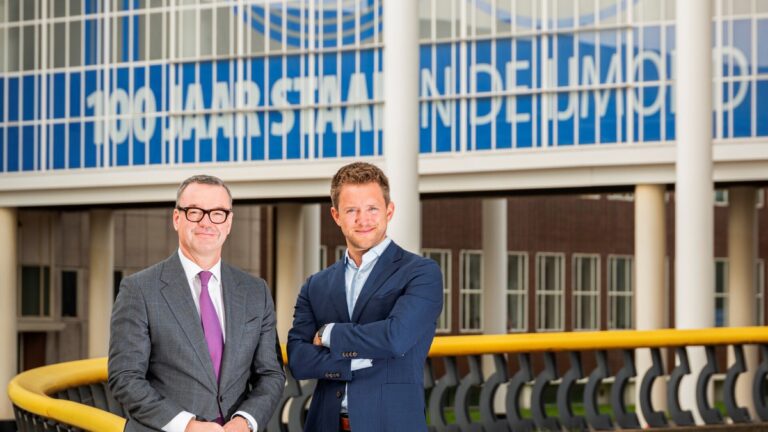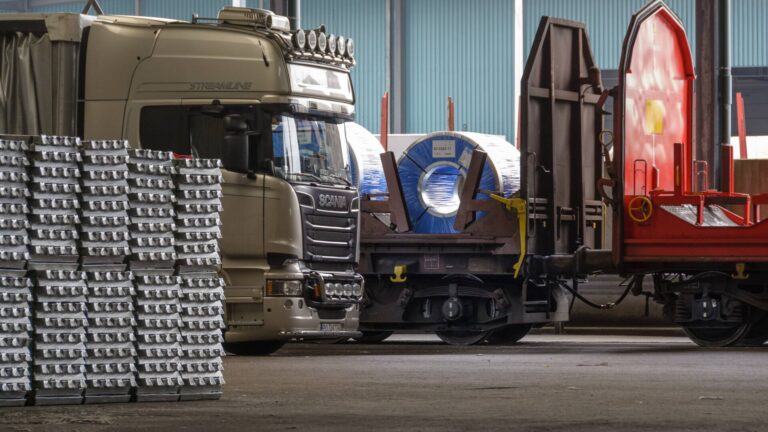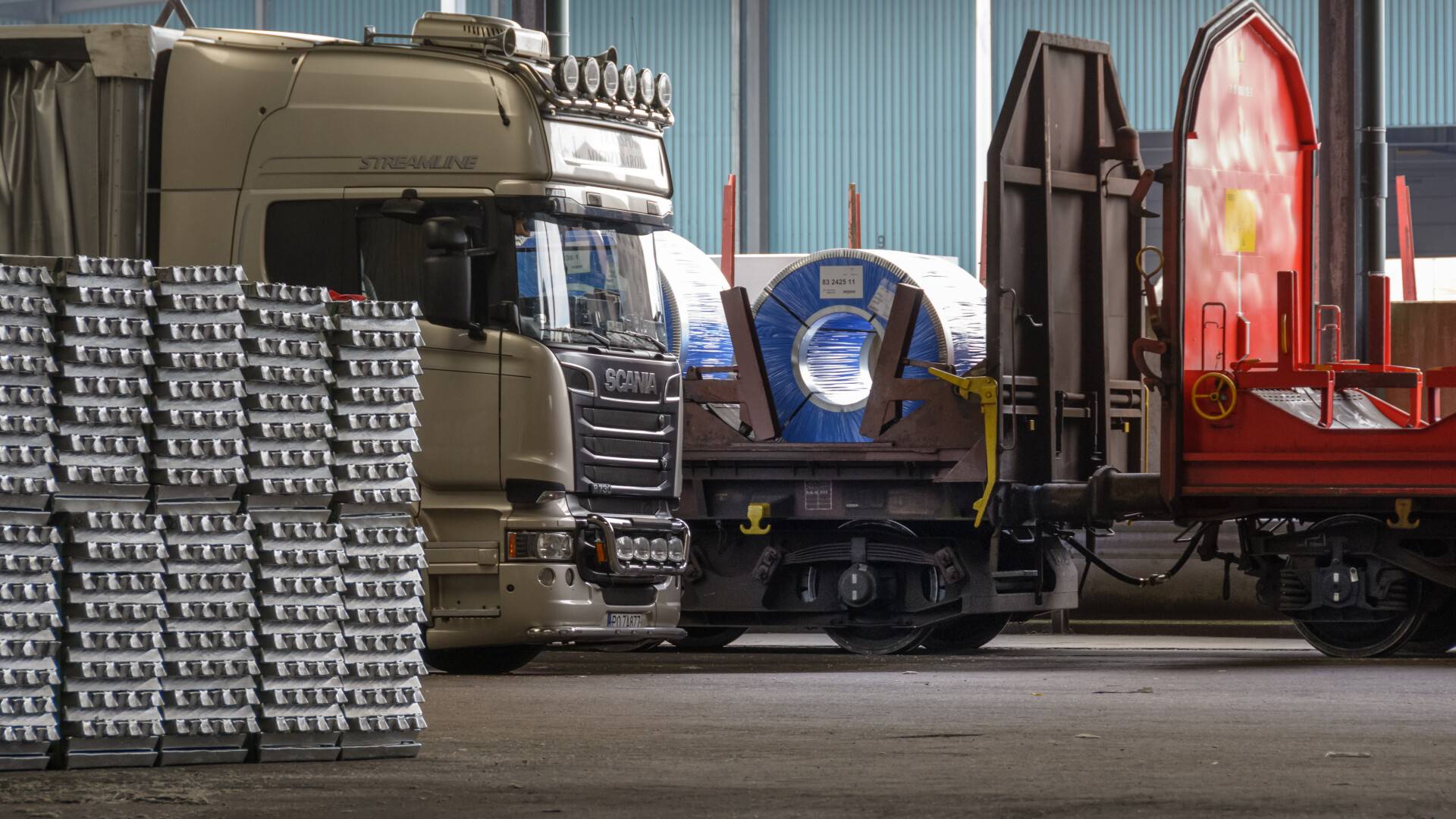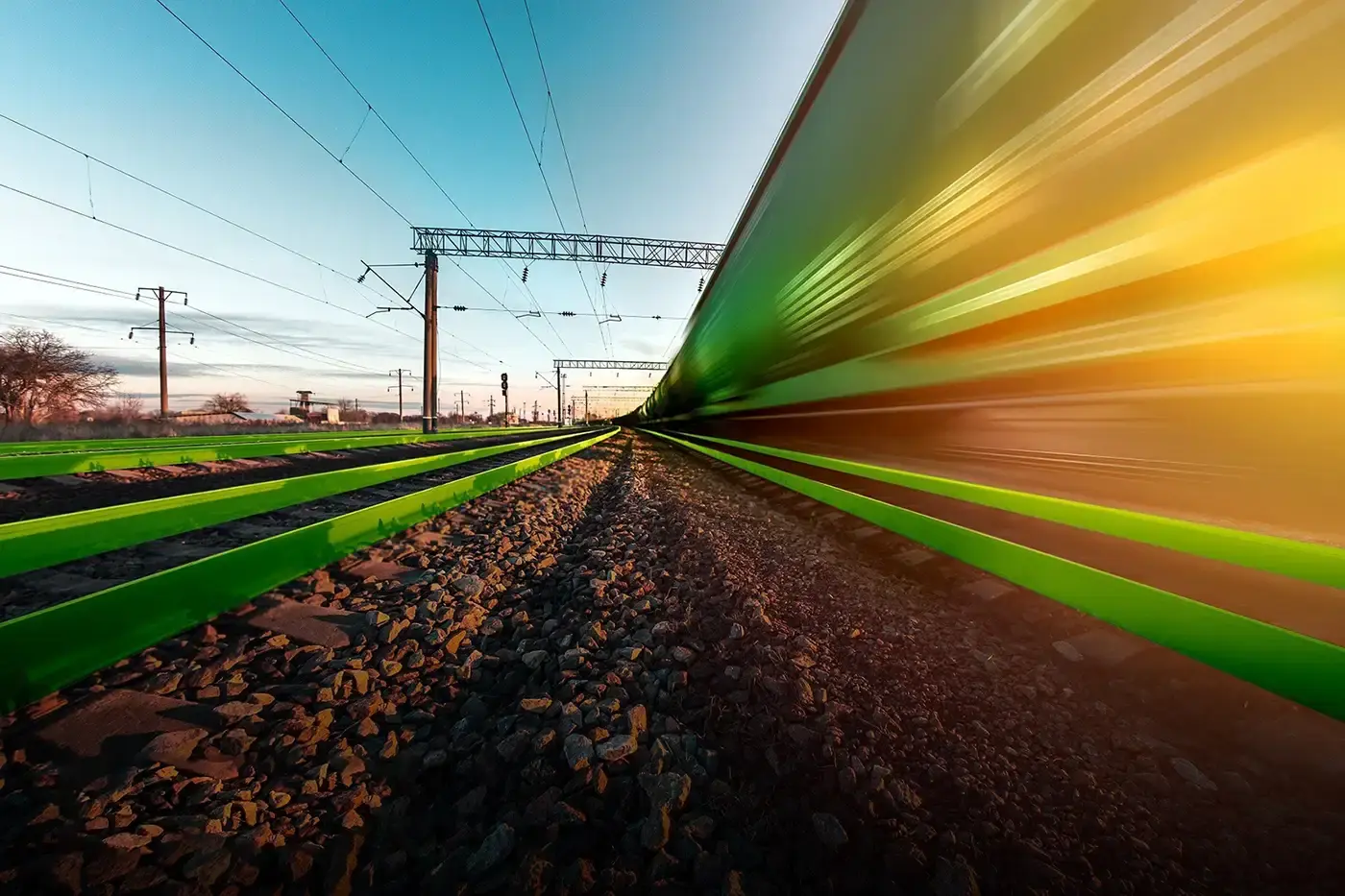April 2, 2020 | #BESTPRACTICE
Tata Steel: “ we optimize our trains! ”
Rail is an important modality for Tata Steel (approx. 2.5 million tons of steel and raw materials); not only because steel is naturally best transported by rail, but also because Tata Steel is actively working on a sustainability strategy in which rail transport is very important. We see steel production as part of a circular economy and we are working on various projects to reduce our emissions.
Strategy
The outgoing flow of goods from Tata Steel is roughly responsible for ‘ only ’ 4% of our total CO2 emissions. That is relatively little, but still sufficient reason to reduce it. We do this primarily by taking as many trucks off the road as possible. Rail and inland shipping are our sustainable alternatives. Modal shift helps us keep costs under control and is also a way to reduce driver shortages on the road. In addition, we see that our value chains are becoming increasingly complex. You need the talent of the future for this and you do not attract milennials if you do not seriously fulfill your sustainability objectives.

Supply chain
The output current from Tata Steel mainly consists of coils (95%) and sometimes crude steel in slices. 18% of our coils are removed by rail. This mainly goes in special Shimms wagons and a small part in wagons with a flat loading floor. In addition to rail, Tata uses a lot of deepsea transport and inland shipping. We try to reduce the share of road transport as much as possible. We do this from our own strategy, but also increasingly motivated by our customers, such as the automotive sector. These ask for our reports on CO2 – emissions. Automotive is an important market for Tata. We also supply galvanizing lines, manufacturers of white goods, construction steel and the packaging industry. Our inbound flows by rail consist of lime from quarries in Germany and Belgium. We try to optimize our outbound and inbound on those relationships. I.e. outbound with steel and empty lime wagons and laden lime and empty steel wagons on the way back.

Optimization logistics
The low-water problems in inland shipping have had consequences for Tata Steel for the strategic relationship between inland shipping and rail. On our large flows to customers in Belgium who can be supplied via inland shipping, we still opt for a partial supply by rail in order to spread the risk better. Tata itself determines the relationship between rail and inland shipping by means of tooling. We have a Network Management Development department for this, where we optimize on costs and CO2 footprint. We used this, among other things, when the track was blocked in Rastatt. With this we always have an emergency scenario at hand. We also use predictive analytics to predict and reduce urgent transports earlier. By explicitly following this in models, we try to avoid that finished product still leaves our plant by truck during an emergency transport. Good results have been achieved with this.
Opportunities and threats
Tata Steel is deeply concerned about the High Frequency Rail Transport Program. National politics wants all freight trains as much as possible about the Betuweroute. In addition, companies that are not directly on the Betuweroute are forgotten. We must always use the A2 corridor where the number of train paths has drastically decreased due to, among other things, track-free driving. We are also concerned about the introduction of PHS on the Alkmaar to Amsterdam line where we have a unit cargo service every day. We use the quays in Amsterdam to load inland vessels. In the plans of PHS there is no room during the day for a freight train on this connection. Customization would be possible here according to IW, but it is not clear to us how that works or what it means. We want to know how you can drive through a PHS current during the day as freight transport. Together with the Port Authority Amsterdam, we are committed to this. Ultimately, this could lead to a wrong shift from rail to road transport and we certainly do not want that. Finally, we are concerned about the progress of work on the third track in Germany. When curdling the Betuweroute, the alternative about Venlo and Viersen does not work properly. Our trains are scheduled to run three hours longer than usual, but in practice they still arrive later. This is detrimental to our loading and unloading time. Ultimately, we are forced to use trucks to supply our factories on time. Tata sees opportunities in more cooperation in the chain. We are open to conversations with other shippers to bundle cargo by rail, for example in the cargo network unit. Parties must then be prepared to be transparent about their logistics flows so that you can get a good picture of the bundling potential. You do need a certain amount of flexibility to arrive at new rail products. You have to be able to get a path everywhere at least once an hour to be interesting. We see this flexibility decrease because the use by passenger transport is becoming increasingly intensive and will work more and more systematically. If the rail network is made more flexible, it is also easier to climb the track with your flows and that takes more trucks off the road.


Tata Steel
World leaders in sustainable steel. Innovate for tomorrow, but make a positive impact today

